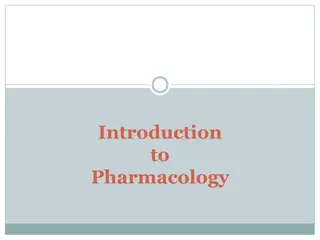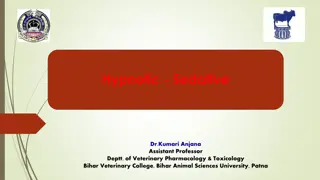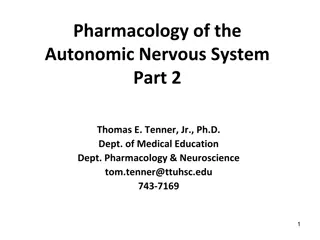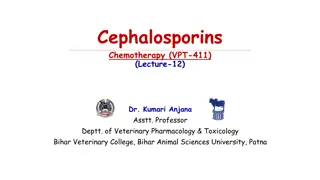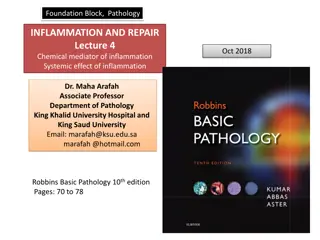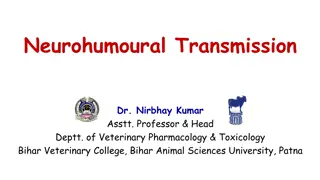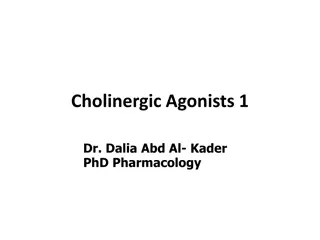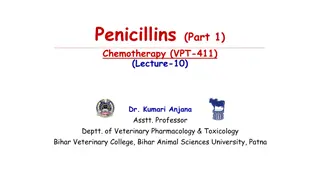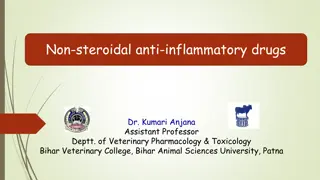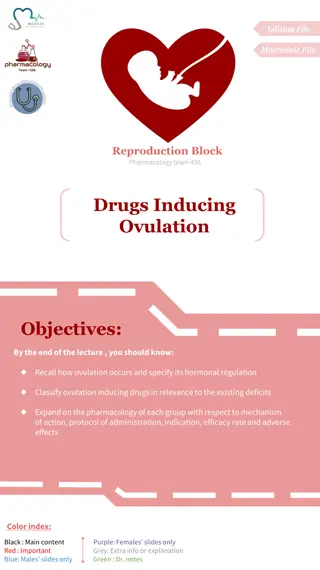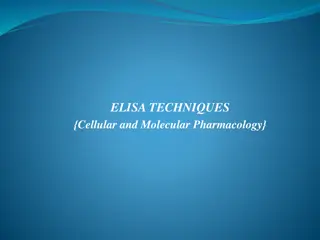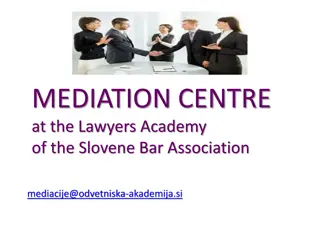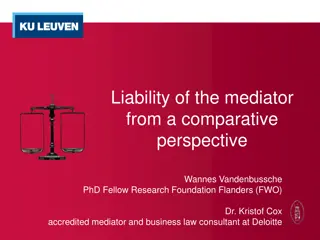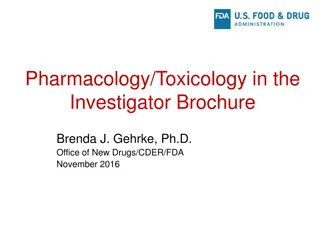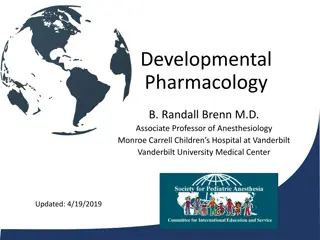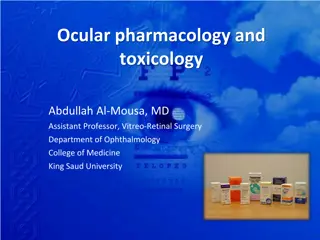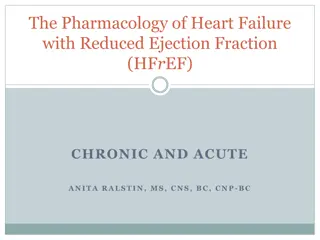
Cellular Communication: Routes, Chemicals, and Functions Explored
Explore the intricate pathways of cellular communication through blood, extracellular matrix, nerves, and various signaling molecules like eicosanoids, prostaglandins, and more. Learn about the general features, actions, and classifications of these cell signaling components for a comprehensive understanding of their role in the body.
Download Presentation

Please find below an Image/Link to download the presentation.
The content on the website is provided AS IS for your information and personal use only. It may not be sold, licensed, or shared on other websites without obtaining consent from the author. If you encounter any issues during the download, it is possible that the publisher has removed the file from their server.
You are allowed to download the files provided on this website for personal or commercial use, subject to the condition that they are used lawfully. All files are the property of their respective owners.
The content on the website is provided AS IS for your information and personal use only. It may not be sold, licensed, or shared on other websites without obtaining consent from the author.
E N D
Presentation Transcript
Via general routes Blood Via ECF, Gap junctions, ECM... Along specified path Nerves
Secreted by one cell & acts upon adjacent cells extracellular matrix [ECM] or surrounding Secreted from a cell and acts on the same cell
Chemically they are classified into EICOSANOIDS Prostaglandins Prostacyclines Thromboxane A2 Leukotrienes etc OTHERS Cytokines Chemokine Growth Factors .etc. NO PEPTIDES Contractants Angiotensin Endothelin NPY Vasopressin PURINES ATP / ADP Adenosine MONOAMINES Histamine Serotonin etc Relaxants Kinines ANP Tachykinins [SP] VIP .etc
General Features Act mostly on: SMOOTH MUSCLES (SMC) [vascular (VSMC) or non vascular (NVSMC)] nerve endings [> nonadrenergic non-cholinergic (NANC) co-transmission] + heart + exocrine glands + CNS etc Exist either: Preformed & stored in tissues & released by a stimulus [Monoamines (histamine), most peptides ] Formed de novo in response to a stimulus [NO, eicosanoids, some peptides, cytokines]] Their presence is either: Constitutive: present all times, to share in normal basic functional regulation within the cells (eNOS / COXI I ) Inducible: only present upon demand i.e. gets expressed [gene transcription, mRNA formation and ribosomal translation into protein] (iNOS / COXII II)
Nitric Oxide Angiotensin & Bradykinin I Eicosanoids Histamines II
Part I By the end of this lecture you will be able to: Recognize the role of NO in cellular communication. Classify the different NOS available Expand on its formation, actions termination and pharmacological modulation. Identify role of angiotensin in body homeostasis and local regulation. Explain its formation, target receptors, feedback regulatory actions, breakdown, intersection with the kinin system and pharmacological modulation.
Is a highly diffusible stable gas Synthesis L-arginine + O2 NADPH, FAD, CaCAM NO + Citrulline + H2O Nitric oxide synthase (NOS) Type I [n-NOS] Neuronal NOS Cytosol of Neuronal cells NOS Isoforms Type III [E-NOS] Endothelial NOS Bound to membrane of endothelial cell [EC], platelets etc. Constitutive Relaxation of VSMC Cytoprotective Type II [I-NOS] Inducible NOS Cytosol of macrophage, neutrophil, kupffer cells etc Inducible Immunocytotoxicity Constitutive Neuronal messenger Cytoprotective Shear Stress or Agonists as; Ach, histamine, bradykinin, ..when bind to receptors intracellular Ca activate eNOS NO formation
PARACRINE PARACRINE AUTOCRINE PARACRINE Role of NO in blood vessels Relaxation of VSMC (Vasodilatation) + Cytoprotection on ECs
Action 1.Vasodilatation Diffuse to VSMC Binds soluble GC Change GTP to cGMP PARACRINE Diffusion Endothelial Cell [EC] Vascular Smooth Muscle [ VSMC] Site of formation Activate PKG & Ca Inactivate MLCK Prevent actin myosin cross link No contraction RELAXATION - MLCK 2. Cytoprotection platelet aggregation inflammatory cell recruitment Cholesterol deposition etc. PARACRINE AUTOCRINE
Termination of action By formation of 1. Stable analogues with proteins containing SH . 2. Free radical Peroxynitrite in oxidative stress By break down of its downstream signal [cGMP] by PDE to form GMP BV
Drugs modulating 1. Express eNOS: Statins, Estrogen CVS Cytoprotection 2. Act as NO donners: a. Nitrates >Venulodilators in angina b. Na Nitroprusside Arteriolar dilator in hypertension 3. Inhibit PDE = (Prevent breakdown of cGMP): Selective PDE5 Inhibitors; Sildenafil Erectile dysfunction
A vasoconstrictor peptide Synthesis Precursor is Angiotensinogen; a plasma -globulin synthesized in the liver. Endothelium, brain & Angiotensinogen (Ag) Other Proteolytic Enzymes Chymase Chymase Endoperoxidase Endoperoxidase AT2 AT1 Secreted by renal juxtaglomerular apparatus Blood Pressure Renal Blood flow
ENDOCRINE PARACRINE ALDOSTERONE PARACRINE Suprarenal Gland
Ag II Ag II Ag II Ag II Thirst SNS activation Action Ag II ADH ALDOSTERONE Na retention Fibrosis Hypertrophy Vasoconstriction Remodeling =Hypertrophy Inotropy Chronotropy Fibrosis H2O retention
Termination of action Ag II AgII acted upon by peptidases aminopeptidases (angiotensinase) to Ag III [a less active] & then to fragmentation products
Propranolol BF [ 2 ] Drugs modulating RENIN Inhibitors Aliskiren INHIBITION OF RAAS SYSTEM is beneficial in treatment of: Hypertension ( Heart Failure ( Diabetics (Protect the kidney) hypertrophy) hypertrophy & fibrosis) ACE Inhibitors Lisinopril VASOPEPTIDASE Is Omapatrilat ARBs Candisartan Inactive metabolites ALDOSTERONE Antagonists Spirinolactone Eplerenone
Bradykinin is a vasodilator peptides Synthesis Kininogen From liver Plasma Plasma Kallikrin Kallikrin TissueKallikrin TissueKallikrin Aminopeptidase Aminopeptidase Bradykinin Action Vasodilatation Inflammation & Exudation Pain (sensory nerves) Exocrine gland secretion Kallidin ACE & Neutral ACE & Neutral Endopeptidase Endopeptidase (NEP) (NEP) Inactive metabolites Termination of action
NSAIDs Action bradykinin mediated pain Drugs modulating . ACE Inhibitors ACE Bradykinin Inactive metabolites BK R (eNOS) NO+ Citrulline + H2O L-arginine + O2 Vasodilatation their concentration ACE Inhibitors Breakdown VASOPEPTIDASE Is Antihypertensive drugs
Difference between ACE Is & ARBs action Inhibit activation of AgI to AGII + decrease degradation of bradykinin ACE Inhibitors Ramipril AT2 ARBs AT1 Candisartan Block action of AgII on AT1 in VSMCs that is causing vasoconstriction The AgII act on non-blocked AT2 on endothelial cells causing vasodilatation

